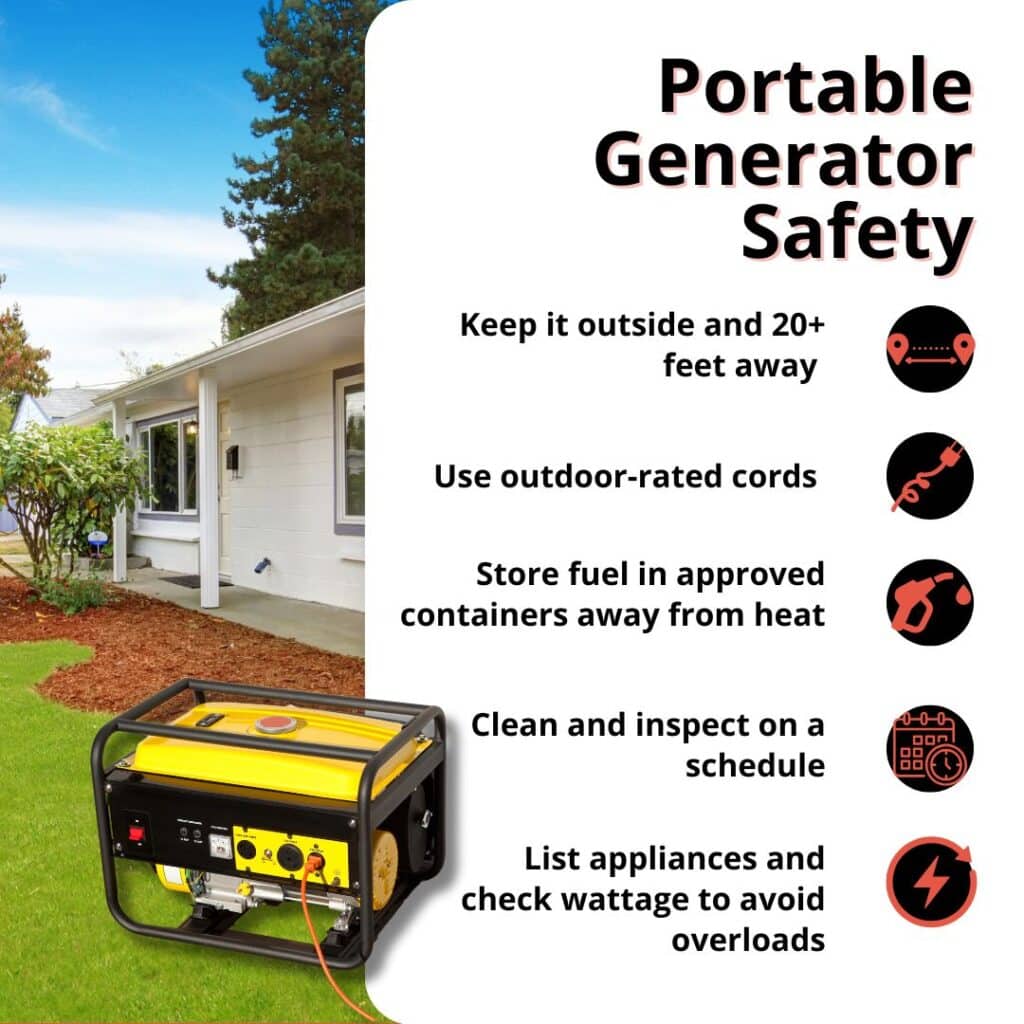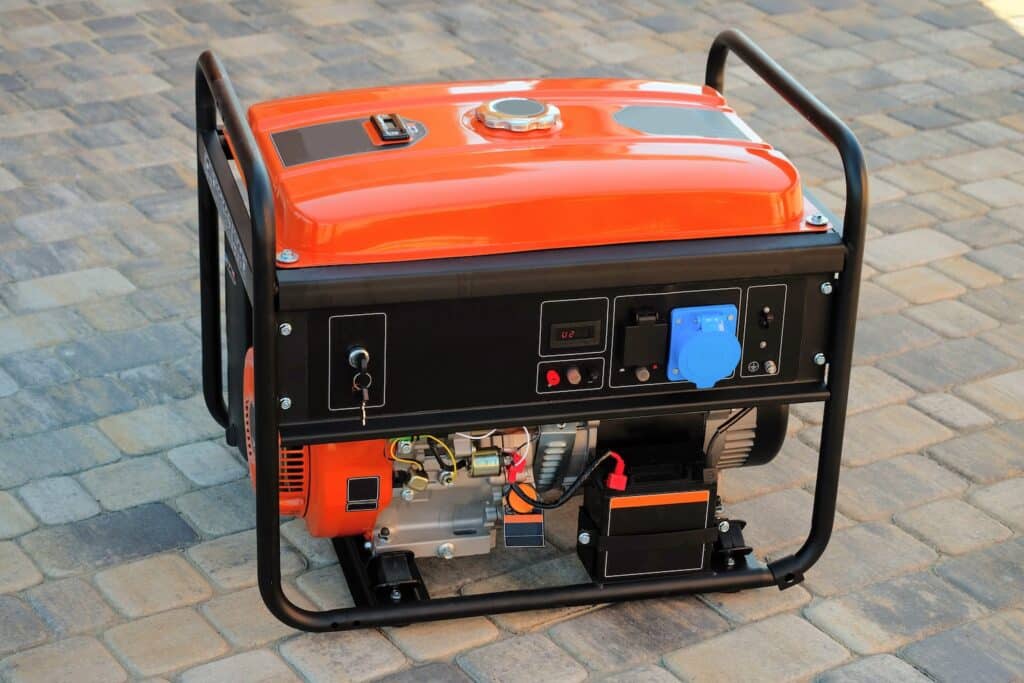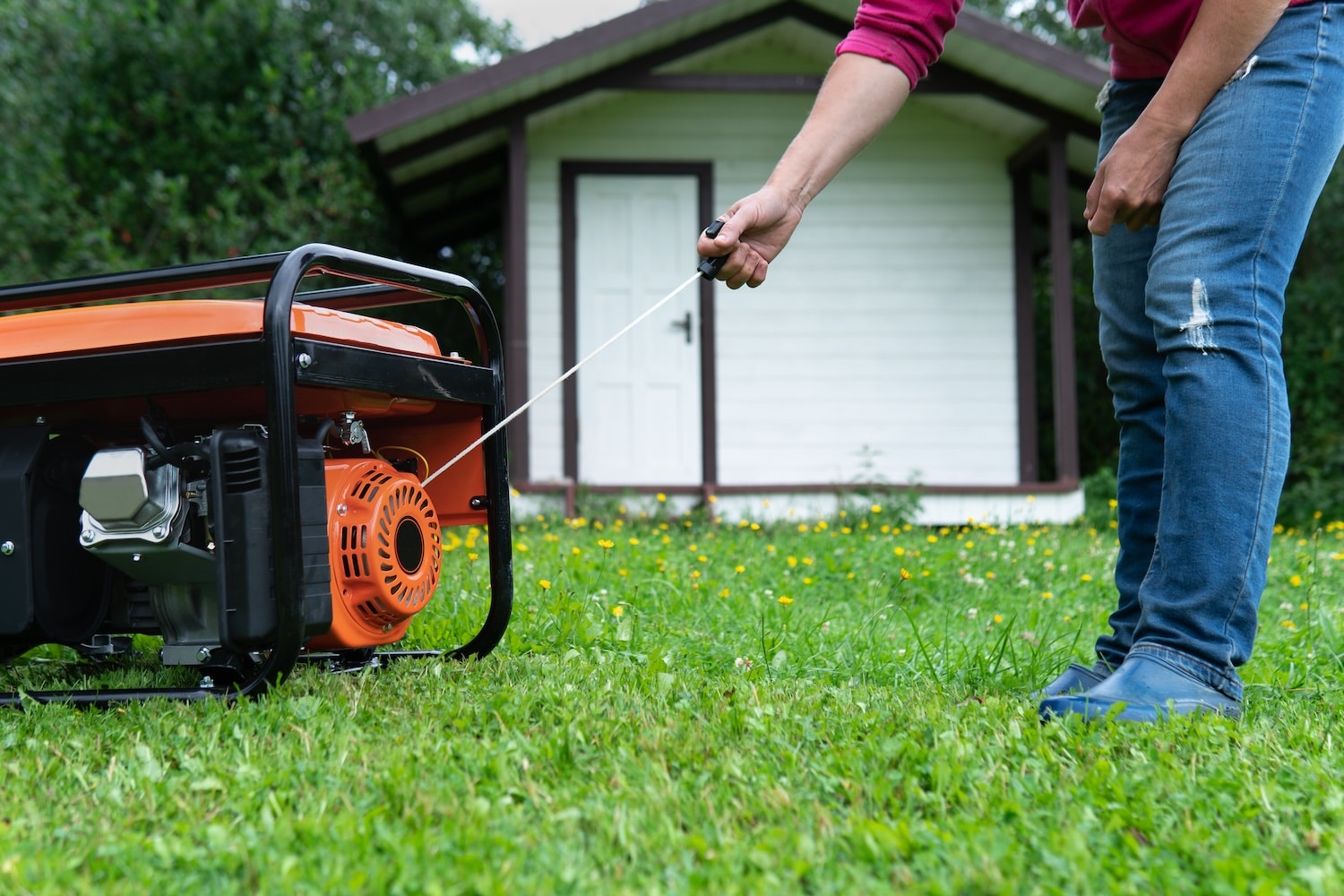A large portable generator can be a real game-changer when the power goes out, but it’s important to use it safely. While they provide backup power, generators can also pose serious risks if not handled properly.
Things like carbon monoxide poisoning and electrical hazards are no joke. That’s why this guide will walk you through five simple but smart safety tips to make sure you’re getting the safest and most efficient function.
If you need professional installation of a portable or standby generator – Our first call would be to the professionals at Central Florida Electricians
Table of Contents
Toggle1) Keep it Outside and Away from Windows
Large portable generators produce carbon monoxide (CO)—a deadly, colorless gas that can quickly build up in enclosed spaces.
To keep your family safe from CO poisoning, always use your generator outside, away from windows, doors, and vents that could draw in harmful fumes. Aim to place it at least 20 feet away from your home and any other occupied spaces.
Never run the generator in a garage, basement, or shed—even with doors open. Even small amounts of CO can be lethal in these confined spaces. Keeping your generator in an open, well-ventilated area is the best way to keep dangerous gases outside.

2) Use the Right Extension Cords
Using the correct extension cords for your generator is essential for safety. Household extension cords aren’t designed to handle the power output of a large generator, and using them can lead to overheating, melted wires, or even fires.
Look for heavy-duty, outdoor-rated extension cords that are specifically designed to carry the high wattage from your generator. Make sure the cord’s rating matches the power your generator will be supplying to your appliances.
Also, avoid overloading your generator by plugging in too many devices. Overloading can cause your generator to overheat or damage sensitive equipment. Before you connect anything, check the wattage of your appliances to make sure you’re not exceeding your generator’s capacity.
3) Store Fuel Safely
Fuel is what powers your generator, but it also needs to be stored properly to avoid serious fire hazards. Always use approved fuel containers and store them away from your generator, as well as any other sources of heat or flame.
Keep your fuel in a cool, dry place, and never store it near the generator when it’s running. Before refueling, always turn off the generator and let it cool down. Refueling a hot generator can lead to fires.
Make sure fuel containers are sealed tightly to prevent leaks, and always use fresh fuel. If you’re storing fuel for an extended period, make sure to rotate it regularly. Stale fuel can be unsafe to use and may affect the generator’s performance.
4) Regular Maintenance Checks
Taking the time to perform regular maintenance on your generator can prevent costly repairs and keep it running smoothly when you need it.
Before each use, inspect the generator for any visible damage, leaks, or wear. Check the oil level and ensure the air filter is clean. Following the manufacturer’s recommended maintenance schedule is key. This includes regularly changing the oil and replacing spark plugs as needed.
Other Recommended Maintenance
In addition to the regularly recommended checks, there are a few more maintenance tasks that can help keep your portable generator in shape:
- Clean after each use: Dirt, debris, and moisture can get into the generator. Wipe it down and keep it free from buildup.
- Store it properly: Keep your generator in a dry, sheltered space when not in use to protect it from rain or snow.
- Exercise the generator: Run it for a few minutes every couple of months, even if you don’t need it, to make sure it’s working properly.
5) Backup Power Planning
Having a solid backup power plan is essential to using your generator effectively and safely. Knowing what appliances you’ll need to power during an outage helps you avoid overloading your generator and ensures you’re prepared when the power goes out.
Start by listing the essential appliances—like your refrigerator, medical equipment, lights, and devices you can’t live without. Check the wattage requirements for each item, and total them up. This will give you a clear picture of your power needs.
Once you know how much power you need, compare that with your generator’s capacity. Make sure your generator can handle the load without straining.

When to Call a Professional
If your generator is acting up—whether it’s not starting, making strange noises, or showing signs of wear and tear—it’s time to reach out for expert help. Trying to fix complex issues on your own could lead to more damage or, worse, pose safety risks.
A professional technician can diagnose the problem quickly and safely, ensuring that everything is up to code and working properly. Don’t wait for small issues to escalate—early intervention is never a bad plan.
Conclusion
A large portable generator is a powerful tool that can keep your home running smoothly during power outages, but safety should always be your top priority.
By keeping it outside, using the right extension cords, storing fuel properly, maintaining it regularly, and planning your backup power needs, you’ll ensure that your generator works efficiently and safely when you need it most.

